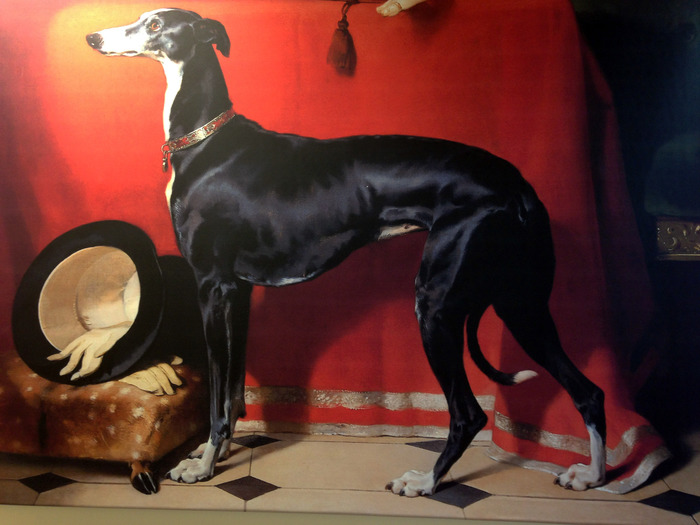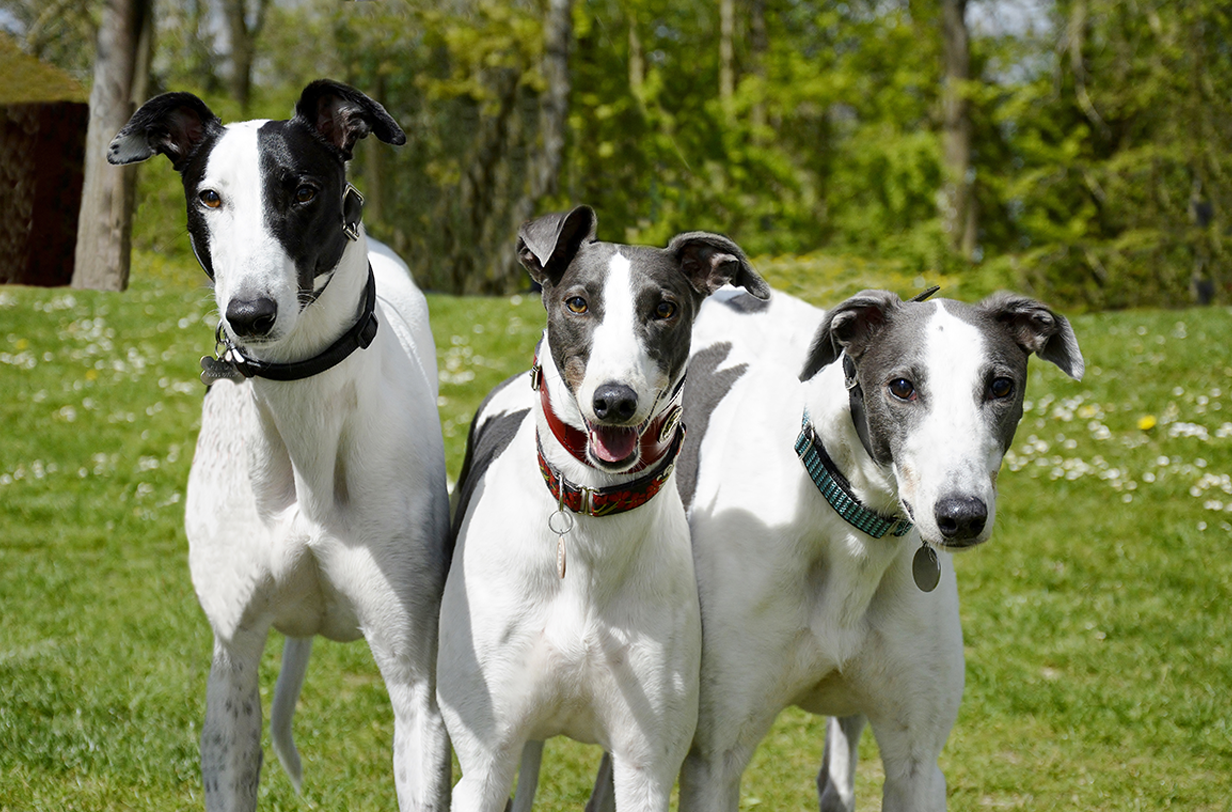All About Greyhounds
A Historical Breed
Did you know the greyhound is one of the oldest breeds in history? These noble dogs have been traced back over 4,000 years to early cave drawings and are the only breed mentioned in the Bible. By giving a greyhound a home, you are taking on a true thoroughbred and a breed that has been “mans’ best friend” for thousands of years!

Greyhound Breed Profile
- Group: Hound
- Size: Large
- Height: Male - 71-76cm, Female - 69-71cm
- Weight: Male - 27-40KG, Female - 26-34KG
- Average Retirement Age: Between 3 - 5 years of age
- Average Lifespan: Up to 15 years!
- Moulting Level: Medium
- Grooming: Light
- Exercise Required: Perfectly happy with two twenty minute walks a day Greyhounds are built for speed, not stamina, and use up their energy in short bursts.
- Temperament - Intelligent, Gentle, Affectionate & Even Tempered.
- General: Greyhounds get along with children, the elderly and people with disabilities, and can live happily with with pets including cats.
Greyhounds as Pets
Greyhounds make great pets for all kinds of individuals and families. They are low-maintenance, gentle and laid-back dogs that don't need lots of exercise. Greyhounds will gladly spend the rest of their time dozing quietly next to you (often on their backs, with all four legs in the air!)
_inline_image_detail.jpg?1581608587)
The majority of greyhounds retire from racing between three and five years of age, so they are still relatively young dogs with a long life ahead of them. We have greyhounds of all ages and temperaments available for adoption, so we may have one that's perfect for you.
Greyhound Q&A
Q. Are greyhounds good with children?
A. Greyhounds are as good with children as any dog breed and better than most, because of their characteristic gentleness. They have been around people all of their lives and are usually very people-oriented.
Q. Do they always need to be muzzled?
A. Greyhounds do not need to be muzzled at all times, but we do recommend that you keep your greyhound muzzled when out and about, at least until you are confident of their behaviour around other breeds. They are quite used to it and associate it with pleasurable walks. If you feel you need to let your dog off the lead, a confined space and the wearing of a muzzle is recommended. We provide a collar, lead and muzzle with every greyhound that we home.
Q. How do greyhounds get on with other dogs?
A. Most greyhounds get on well with other dogs and many live with other breeds. Common sense and careful introductions are the key. If you have another dog, speak to our volunteers who will usually recommend that you bring them down to the kennels to help pick their new greyhound friend.
Q. Can greyhounds live with cats and other small pets?
A. Greyhounds are sighthounds and it is their instinct to chase. Despite this, some greyhounds can be trained to live happily with cats and other small pets (and sometimes, they even become the best of friends!). If you have a cat or another small pet, make sure to discuss this with your local branch who will be able to let you know if they have any greyhounds that they think will be suitable.

Greyhounds are very adaptable and our homing policies are flexible*. Our dedicated volunteers work hard to match the right greyhound with the right family; even if you work, have children, can't walk very far or have other pets, we consider all circumstances and look at all situations individually, so it's always worth getting in touch with your local branch.
*Please note that, as all of our branches are run by volunteers, they may have slightly differing homing policies.